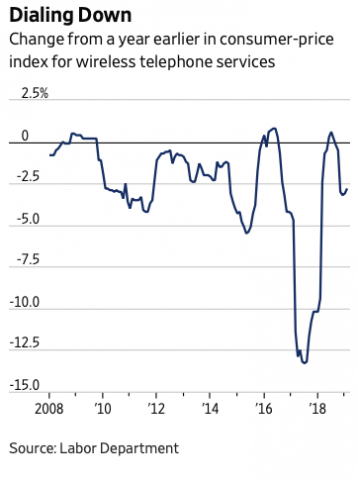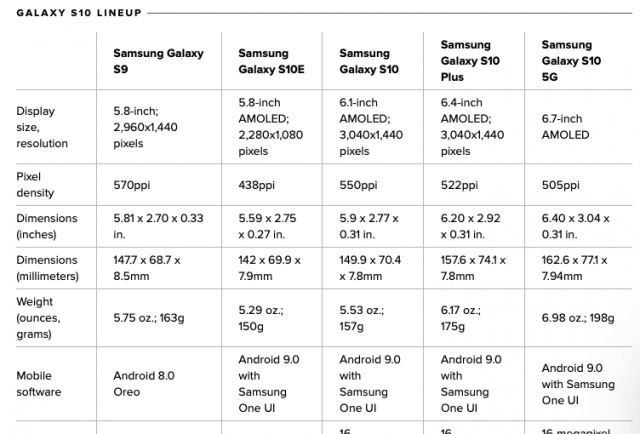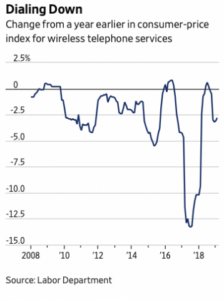In case you missed it, US telecom carrier Verizon Communications Inc. said it is going to charge its customers an additional $10 per month for access to its 5G network after the first 90-days of roll-out. The price reflects a remarkably low price for services that promise up to 100x boost in download speeds, but read on for “the devil in the details”.

First, don’t expect that new Flagship Apple iPhone XS Max to get up and start walking the primrose 5G path next month. The millimeter band above 24 gigahertz that (true) 5G operates on isn’t even supported on smartphones currently deployed in the US. Yep that +$1K you spent on the slick flagship device is already outdated. – Dang!
 Eventually network carriers will use 5G access to help reverse the competitive pricing trend, Source: WSJ published US DOL statistics
Eventually network carriers will use 5G access to help reverse the competitive pricing trend, Source: WSJ published US DOL statistics
That is of course unless you opted to wait for the 5G version of Samsung’s new flagship Galaxy S10 with a supersized 6.7-inch dynamic AMOLED display, coming this Spring or Summer (notably, first on Verizon networks.) Not to be outdone, Samsung’s Korean rival, LG announced a Sprint network exclusive 5G phone (LG V50 ThinQ 5G) slated for launch in May 2019.
 Samsung Galaxy S10 Specs, Source: Tomsguide.com
Samsung Galaxy S10 Specs, Source: Tomsguide.com
At present, to get the Verizon 5G signal one must have a Moto Z3 AND the Z3’s 5G Moto Mod that is available for pre-order as of this writing. Essentially, we are talking about a separate 5G radio attachment to the Z3 device making it 5G compliant.
Next, the 100X bandwidth (or even 10X beyond that) is a future promise with low latency, not bandwidth speeds the real short-term benefit of 5G. This mostly helps improve or enable machine to machine real-time interaction, (think remote surgery, discrete robotics control or driverless vehicles with car to car or car to infrastructure connectivity). On the ground level intersection with consumers this will include AR- and VR-based (augmented and virtual reality) services far more than basic web connectivity and phone messaging.
To that point, does it really matter that you can download Captain Marvell in seconds, rather than minutes, as long as the real time streaming works without interruption?
For its part Verizon said it will start its new 5G service in high density areas close to Chicago and Minneapolis starting around April 11th, and continue with deployment in up to thirty markets in 2019. So expect the initial network upgrade from carriers to serve a more limited urban population to start, with the roll-out happening in earnest as more 5G smartphone devices come on line. For now it sounds more like a beta program than full roll-out, but from small steps… (well you know.)
At present, the Verizon 5G smartphone device deployment includes adding a new 5G radio attachment to a less than top selling smartphone device (Moto Z3) allowing access a network upgrade available in limited cities here in the USA. Remarkably, it looks as if the promise of 5G is finally moving beyond the “hype” stage, as this year we enter into the throws of deployment albeit a long road to 5G ubiquity. — Stephen Sechrist
Samsung Galaxy S10 to Feature Fingerprint-on-Display Authentication?

